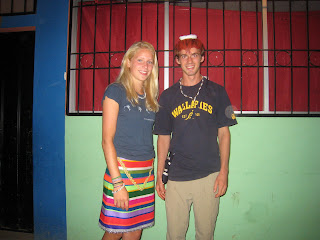We hiked 6-16 kilometers each day, of varying altitude changes, and hiked 40 in total. The trail was beautiful. In places, it was dry and desert-like; in others, we saw snow-topped mountains. Each night we camped in tents under the gorgeous southern hemisphere sky, and at altitude, the weather was freezing after sunset. Local Quechua porters helped to carry all of our gear -- tents, sleeping bags, food for the duration of the trek.
Wednesday was our most difficult day of hiking, culminating in a high-altitude pass called Dead Woman's Pass. We all made it, however, and made it to camp to relax for the rest of the day.
By Friday, we made it to Machu Picchu, the capital city of the Inca empire. The site itself was something of a tourist attraction, swarming even by eight o'clock in the morning, so the most exciting parts were the mountain passes and the early morning sunrises that came on the Inca trail itself. After taking a tour of the site, four of us hiked up Wayna Picchu (the singular peak famous in many post card pictures) where we had the best view yet of Machu Picchu.

The group at the trailhead of the Inca Trail

Afternoon sunset from our campsite

Hiking along the way

The group at Machu Picchu (Wayna Picchu in the background)

View of Machu Picchu from atop Wayna Picchu






 John and I, in traditional Tsa Chila dress
John and I, in traditional Tsa Chila dress






